In 2023, I was granted the opportunity to teach the Summer Seminar for 2D animation.
Each class held 20 high-school students and lasted five days, with the final being reserved for parents and family to come view the students' work. I taught two classes every day for all four sessions.
My first challenge was creating the curriculum for the students. While I had lots of experience teaching, it was a different experience than my usual workshops, as the students didn't have time for homework, I had to fill a two-and-a-half hour block, and I only had four days where students could truly work in class.
Thankfully, I already had experience with teaching students of all different levels, so I came up with a lesson plan that focused on optimizing the use of in-class time while covering as many skills as possible. To do this, each day was split into a repeated structure:
When students arrived, but before class officially began, I would put up gesture drawing reference for students to sketch. Emphasis was given to iterating quickly rather than focusing on anatomy, and each pose was only displayed for 30 seconds. Quickpose.com was used due to it's variety of dynamic poses, as well as its use of clothed models.
Given that I was working with high school students, I made sure to strike a balance between poses that were crazy and fun, and poses that had a strong line of action to be used as teaching moments. While they drew in sketchbooks, I would draw on the monitor in the front of the class as a way to model the amount of detail and time that should be dedicated to this kind of warmup. This also gave me the opportunity to point out important teaching moments, such as the first figure below, where the line of action can be drawn from foot to foot on the man kicking, as opposed to head to foot as it's usually taught.

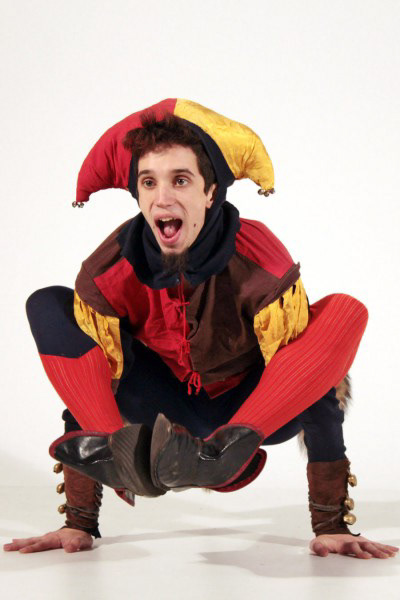
From there, class would break into lecture, which would begin at the class's start time and last about an hour, including time for questions throughout. Each day would cover a different range of topics, which I will briefly cover below.
On the first day, students were taught the following principles of animation: Solid Drawing, Squash and Stretch, Timing and Motion, Slow in and Slow Out, and Arcs. Lecture ended with a discussion of deliberate practice, which encouraged students to be mindful of every step of the process, rather than working quickly and carelessly. As some students already had experience with animation and would get bored with the simple assignments in the early classes, this deliberate practice not only gave students a new perspective to keep them invested, it discouraged students from deviating from the exercises so I could more accurately pinpoint weak points and strengths, and provide relevant instruction on an individual level.
The assignments for day one were very simple, as the main goal of the day was getting students used to working in Toon Boom Harmony. The Magic Dot and the Bouncing Ball served this purpose well, and I demoed each in-class assignment before letting students work independently. As students worked, I went desk to desk to check in, answer questions, and provide critique. At the end of every class, and during break times, students were encouraged to put their animations on loop so that their peers could walk around and compare. This led to increased collaboration and confidence in students who were shy about sharing their work.
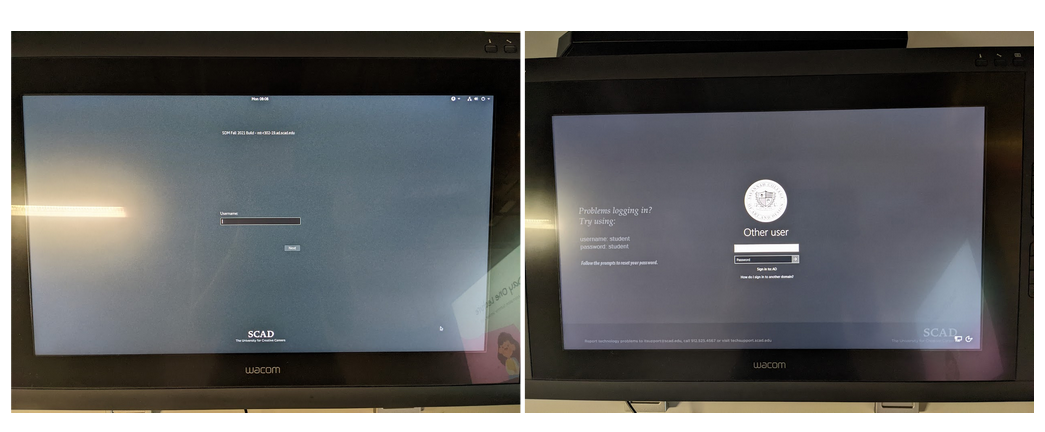
An example of technical issues covered in class - the Mongomery Hall computers boot in both Linux and Windows. Teaching students how to log in appropriately was one of the first lessons shared!
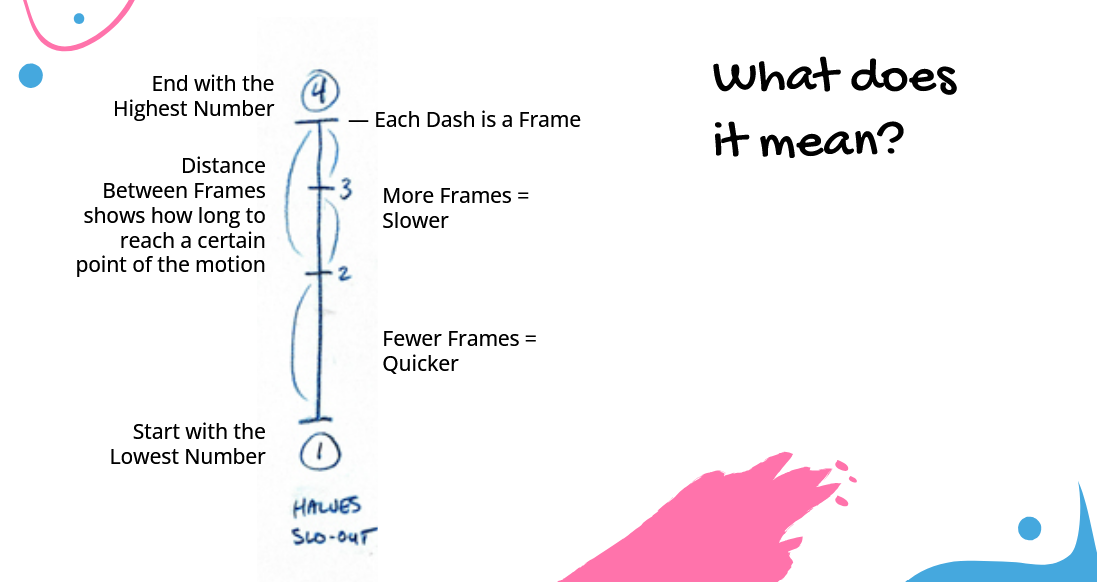
Sample lecture frame - descriptions fade onscreen to limit information overload and allow for questions during explanation of a difficult concept.
As class came to a close, students were given an optional "homework" assignment for them to complete in their sketchbooks. On day one, this was observational drawing of any real-life subject, living or inanimate. Files were saved, often by students emailing them to themselves, and a quick teaser for the next class was given as students left.
On day two, students were taught Anticipation, Follow Through and Overlapping Action, Exaggeration, Secondary Action, Staging, Straight Ahead and Pose-to-Pose, and Appeal. Their in-class assignment was to create a quick flour-sack animation. Students were given free reign over what to create, but a quick wave demonstrating the principles of animation was demoed and many students did similar, quick motions. Jumping, walking, and falling over were also very common, and most animation were three seconds or less. The optional assignment for out of class was gesture drawing of a live figure, encouraging students to work with each other by taking turns modeling and drawing.
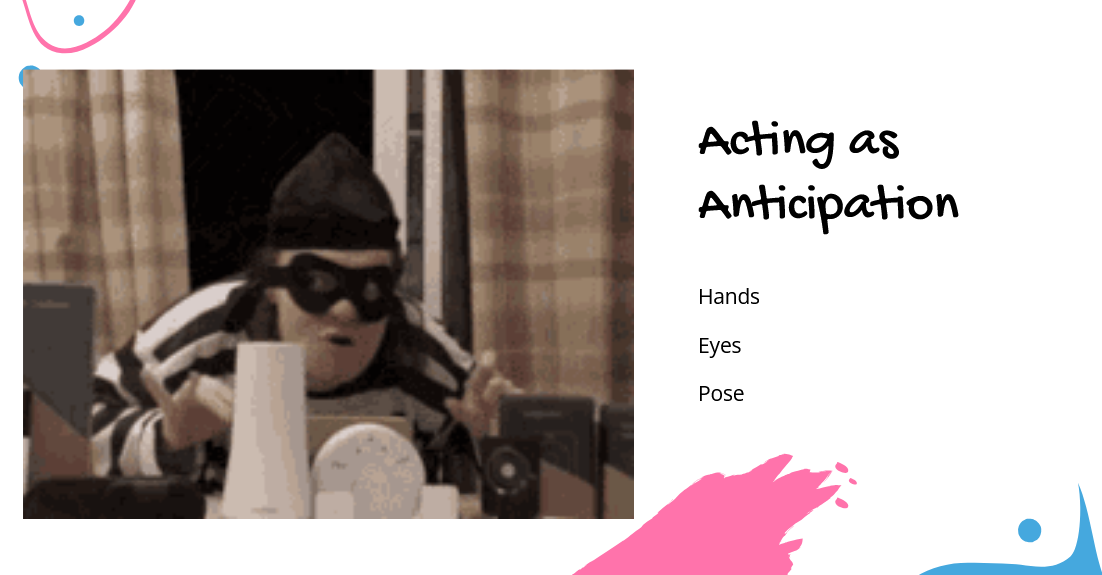
Example slide - expanding on the definition of anticipation to include elements of secondary action
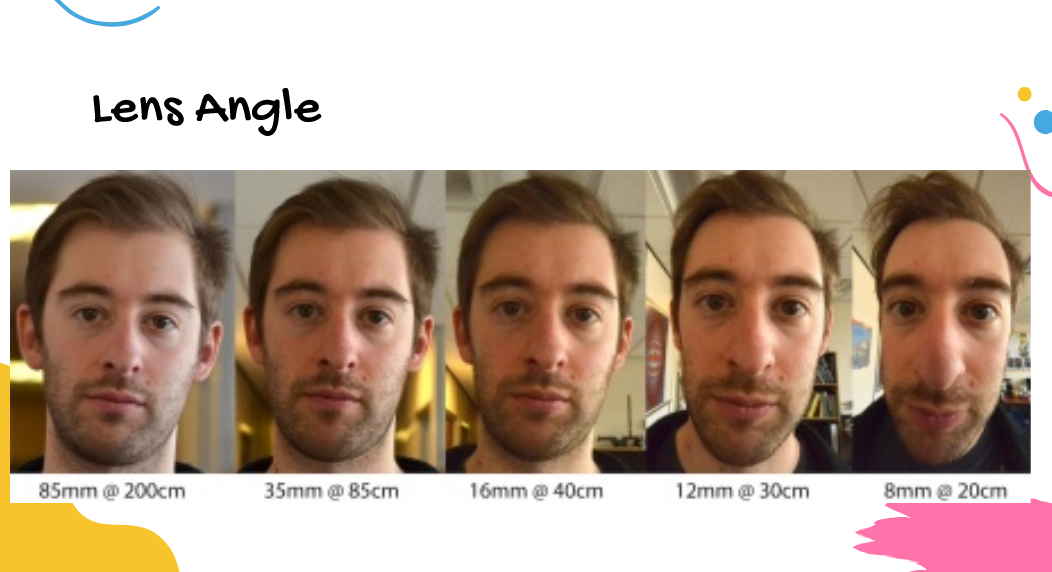
Example slide - discussing camera choices as part of staging
On day three, the lecture covered critique, with focus given to both giving and receiving constructive criticism. As students would be sharing their work, many for the first time, it was important to establish a healthy environment for growth. Students learned how to critique others, how to accept critique, and how to critique themselves. After this, students were given time to continue working on their animations from the day prior, or to restart. Periodically, class would be interrupted for students to look at each other's work and give feedback, and class ended with a discussion on how helpful the critique was as students compared their work to yesterday's. This was the shortest lecture day so students could spend as much time animating as possible. More gesture drawing was assigned as the homework for the day.
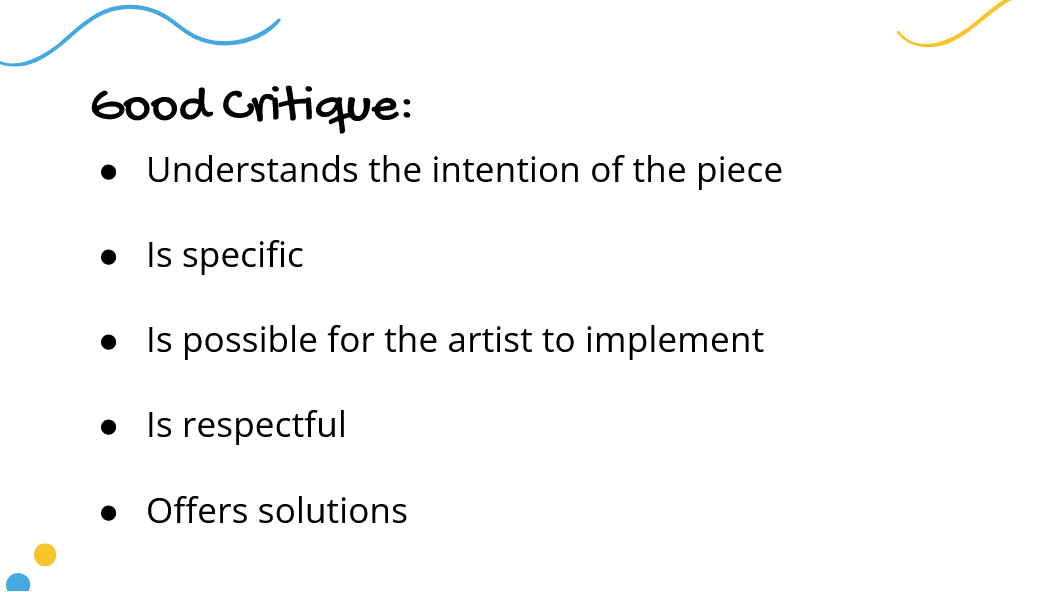
Example slide - defining key elements

Example Slide - constructive self critique

Example Slide - negative self-talk
On day four, I taught students the basics of character design, from shape language and color theory, to more in-depth discussions on how budget, time frame, and tone affect the style of a show. From there, students were given paper, and instructed to create an original design, then to trace it to create two identical copies. From there, the big twist of the day was moving to the lightbox room, where students would trade one of their drawings, and create an eight-frame morph between the two using traditional techniques. This change of scenery invigorated the class, but the time spent working analogue was also an important teaching moment. Many students throughout the week would fail to follow the proper procedure for animation, making work harder on themselves as they wasted time correcting issues. Working traditionally, as well as in collaboration with their peers, enhanced these issues, and every student left with a deep understanding of the animation pipeline, and why process and technique are equally, if not more important, than drawing ability.
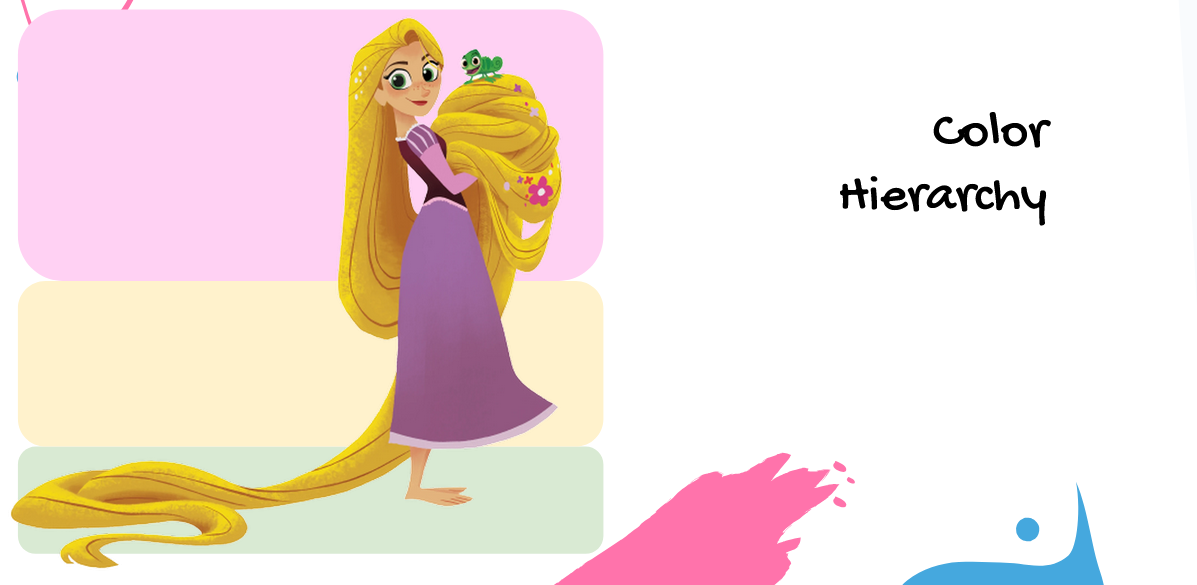
Example Slide - part of the section on color theory. Defining key and accent colors.
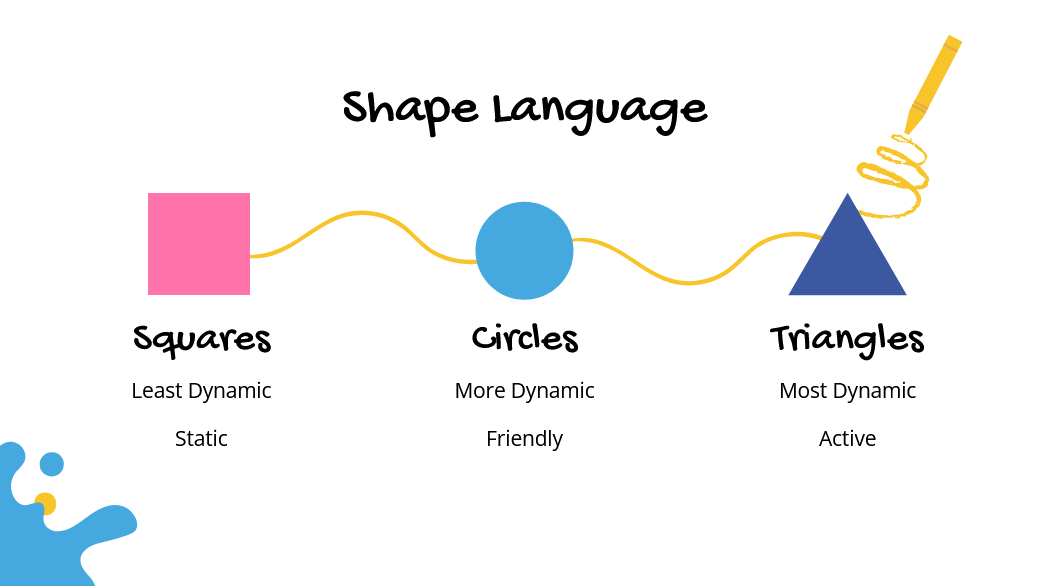
Example Slide - introduction to shape language

Example Slide - Discussing proportion and exaggeration in character design
Day five, as the parents arrived, was focused on the future for animation enthusiasts. The lecture for the day covered the animation pipeline, as well as careers in animation and related fields. After discussing ways for students to practice on their own, students were given time to show their work to their families, and I spent my time answering questions from parents. I got a lot of positive feedback, with many families telling me that their kids loved the class, and that they talked excitedly about it every night. Due to parent presence, students were allowed to leave early, and many chose to do so, but students who chose to stay were given time to work freely. I answered as many questions as possible, and mentored a few students privately after they left the seminar.

Example Slide - Expirimental animation as a medium separate from 2D, 3D, or stop-motion animation
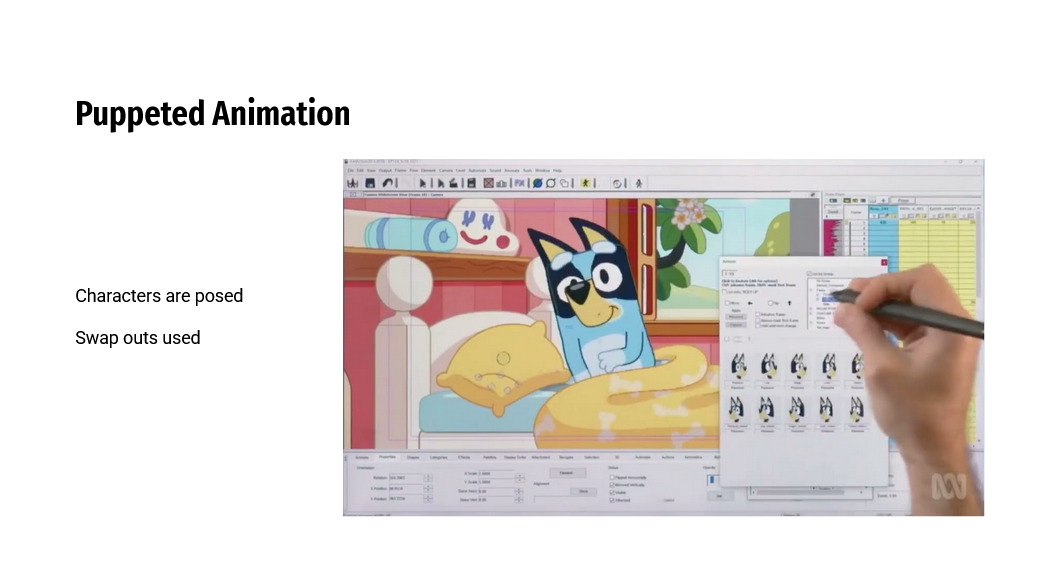
Example Slide - distinguishing between traditional (hand-drawn) and puppeted 2D animation
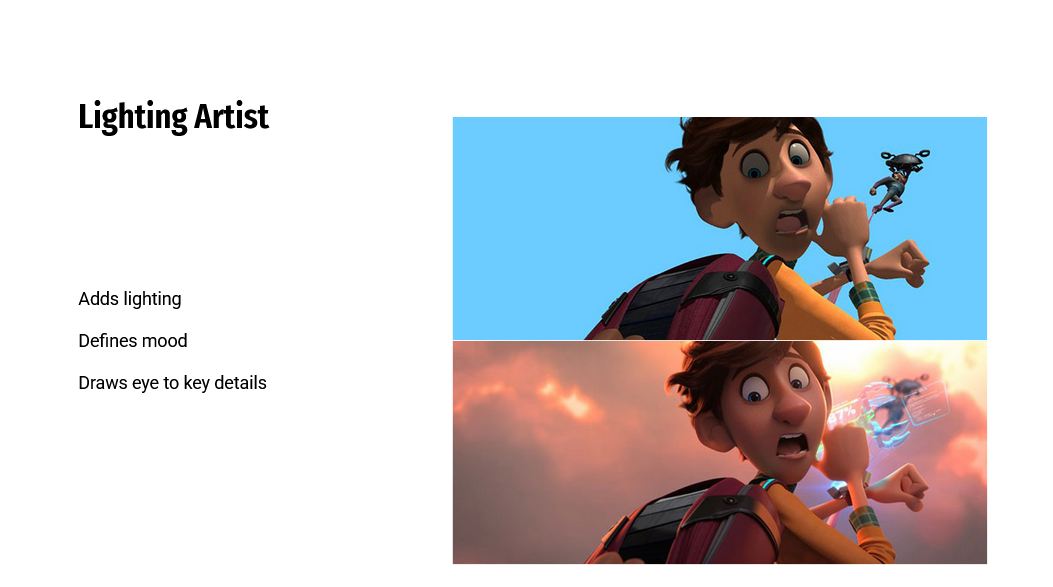
Example Slide - Overview of a specific role in the 3D animation pipeline
Lessons learned:
One of the biggest challenges with this experience was completely unrelated to the curriculum. As the students joining the class were high schoolers, many of them had grown up on iPads and tablets rather than desktop PCs. A lot of issues addressed on the first day were less about animation, and more about how to navigate the file manager, open Gmail, and use a flashdrive. File corruptions or loss due to technical issues were upsettingly common, especially in the early weeks, as students often would make assumptions that proved incorrect and lose them a day's work.
Keeping lessons modular from day to day, giving explicit directions on day one, and repeating as necessary reduced these issues significantly, but time also had to be set aside for the moments where crashes, corruptions, and file misplacement left students in a state of deep upset. As these animations were quick, and there were no grades, I was able to comfort students by reminding them that they still had the knowledge from their experiences, and the work that they were doing was easily replicated. I often repeated the motto, "Every time you redo something, it's twice as good in half the time," which proved very effective.
Additionally, there were inevitably some students with behavioral issues. Some slept through class, others refused to follow instructions and then got upset when their work wasn't improving like their peers, and some got overemotional over critique or minor setbacks, as above.
Thankfully, my experience in peer tutoring, where I had already gathered years worth of experience working with students with disability, neurodivergence, and English Language skills helped me to quickly find resolution in most cases. More difficult ones I often had to simply let be, provide they weren't disturbing the class, as, without grades, the natural consequence for their actions often was having a lack of work to show their parents during day five.
Ultimately, it was a very successful summer, and I enjoyed it greatly! Making my own curriculum, teaching classes, and working with families was one of the highlights of my graduate career, and I'm so grateful to have been able to take part in it.